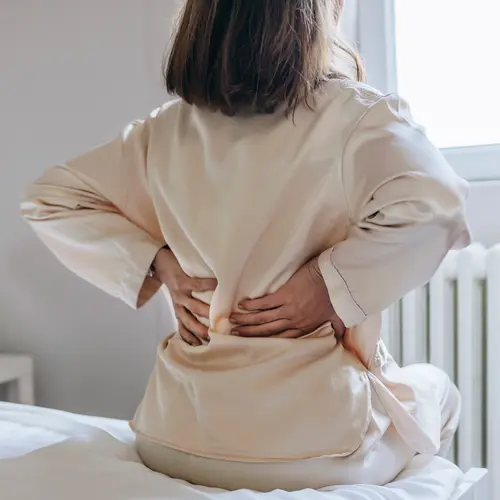It’s easy to think back pain is just part of getting older. But be careful. If you’re nearing age 60, it may be a sign that you have tiny cracks in the bones called vertebrae that form your spine. When these small hairline fractures add up, they can eventually cause a vertebra to collapse, which is called spinal compression fracture.
How Fractures Happen
Soft, weakened bones are at the heart of the problem. Compression fractures are usually caused by the bone-thinning condition osteoporosis, especially if you are a woman over age 50 who has been through menopause.
When bones are brittle, your vertebrae aren’t strong enough to support your spine in everyday activities. When you bend to lift an object, miss a step, or slip on a carpet, you can put your spinal bones at risk of fracture. Even coughing or sneezing can cause compression fractures if you have severe osteoporosis.
After a number of small compression fractures, your body begins to show the effects. The strength and shape of the spine can change. You lose height because your spine is shorter.
Most compression fractures happen in the front of the vertebra. When you get enough of them, the front part of the bone can collapse. The back of the vertebra is made of harder bone, so it stays intact. That creates a wedge-shaped vertebra, which can lead to the stooped posture you might know as a dowager's hump. Doctors call it kyphosis.
Who’s at Risk?
Two groups of people are at highest risk for spinal compression fractures:
- People with osteoporosis
- People with cancer that has spread to their bones
If you have been diagnosed with certain kinds of cancer -- including multiple myeloma and lymphoma -- your doctor may monitor you for compression fractures. On the other hand, sometimes a spinal fracture may be the first sign that a person has cancer.
But most spinal compression fractures happen because of osteoporosis. Some people have a higher chance of getting the disease because of:
- Race: White and Asian women have the greatest risk.
- Age: The chances are higher for women over 50 and go up with age.
- Weight: Thin women are at higher risk.
- Early menopause: Women who went through it before age 50 have higher chances of getting osteoporosis.
- Smokers: People who smoke lose bone thickness faster than nonsmokers.
You can have osteoporosis and not even know it. In fact, about two-thirds of spinal compression fractures are never diagnosed because many people think the back pain is just a part of aging and arthritis.
But if osteoporosis isn't treated, it can lead to more fractures. It’s important to see your doctor if you’re in pain. Osteoporosis treatment won’t guarantee that you’ll never get another compression fracture, but it will significantly lower your odds.
What Can You Do to Prevent It?
Natural ways to prevent compression fractures include taking calcium supplements, getting more vitamin D, quitting smoking, preventing falls, and doing weight-bearing and strength-building exercises. You can also take medications to halt or slow osteoporosis, including:
- Bisphosphonate drugs. Alendronate (Binosto, Fosamax), ibandronate (Boniva), and risedronate (Actonel, Atelvia) can slow bone loss, improve bone density, and help prevent fractures.
- Teriparatide (Forteo), an injectable synthetic hormone that stimulates bone growth and reduces spinal fractures for women with severe osteoporosis
- Raloxifene (Evista), an estrogen-like drug that slows bone loss and helps increase bone thickness
- Zoledronic acid (Reclast), which is given as a once-yearly, 15-minute infusion in a vein. Reclast is said to increase bone strength and reduce fractures in the hip, spine and wrist, arm, leg, or rib.
- Denosumab (Prolia, Xgeva), a monoclonal antibody that can be used to decrease the risk of fractures in people at high risk
The drugs are effective in strengthening bones. If you're at high risk for compression fractures, it's critical to take action. See a doctor and get the right medication to prevent future fractures.

